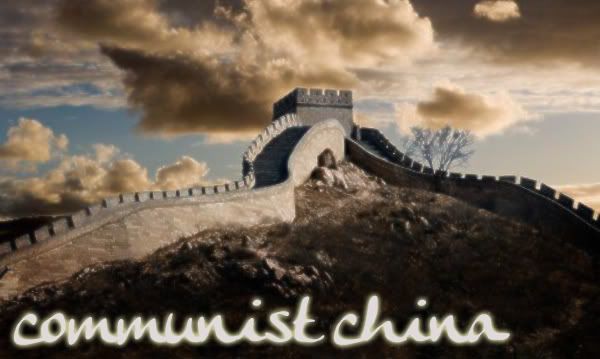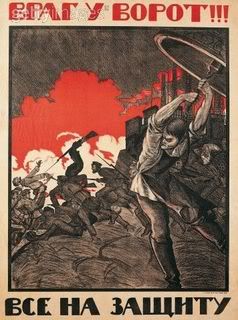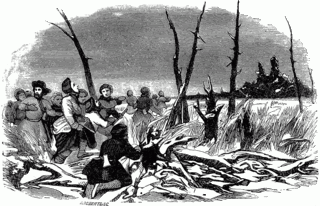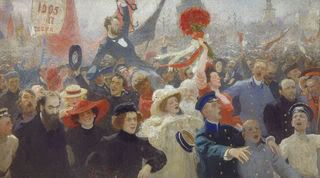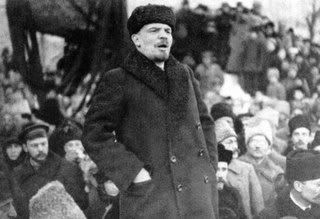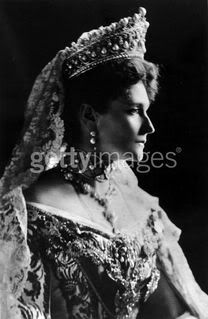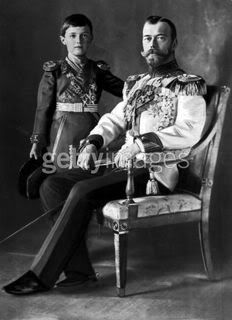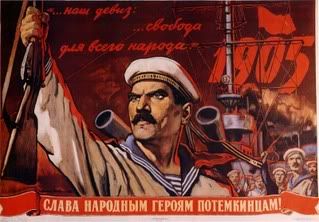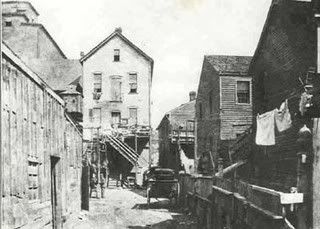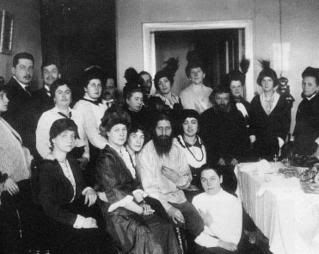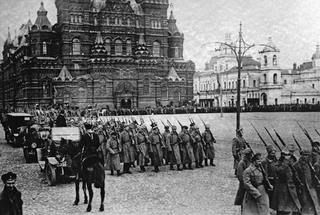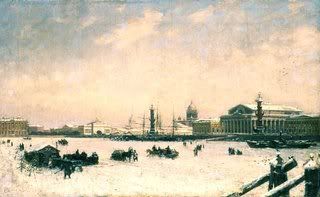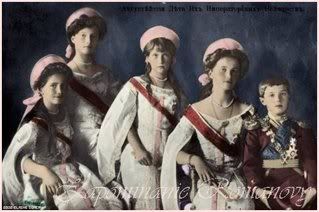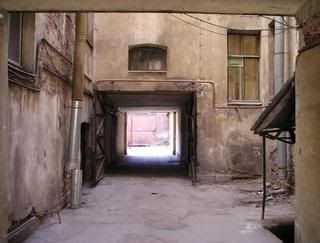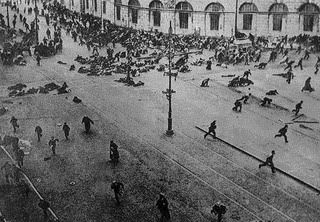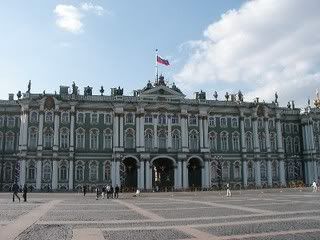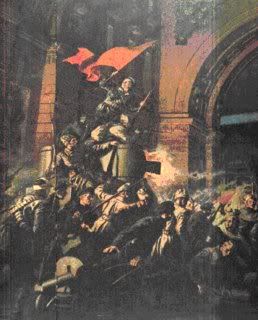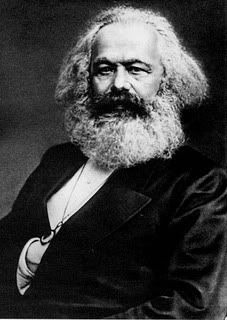
Social Structure
At the beginning of 1917, Russia was growing rapidly and the population was heavily diversified, consisting of many different cultures, religions and languages. A large percentage of the population consisted of peasants, with the nobility and clergy making up only 1-2% of the total, and an almost complete absence of a middle class. Non-russians were made to adopt Russian customs and speak Russian ('Russification'), and it was only the Russians who got the important jobs in the government, despite almost 50% of the population being non-Russian.
Lifestyle
Peasants - Practised backward forms of farming like subsistence farming with few tools. There was not enough land to go around and most suffered heavily from debt problems. Many years ago, they were once serfs owned by the nobility, and after emancipation, they had been given plots of land by the nobility and then forced to pay for them. Most could not afford it and sank further into debt, resulting in a lot of discontentment, as the farmers felt that the land truly belonged to those who worked it.
Urban workers - Received basic education and most were literate and receptive to revolutionary ideas. They had extremely low wages and working conditions were poor, with many deaths resulting from accidents and work-related health problems. Living conditions were appalling and overcrowding was a huge problem.
National Minorities - Were discriminated against as the Russians were favoured for better-paying jobs. They led oppressed lives and wished for equality and an end to the policy of 'Russification' (everything in Russia had to be Russian, no different languages/cultures etc were tolerated).

Rampant poverty in Russia
Economic Situation
Russia was impoverished and the population was steadily increasing with each year, resulting in frequent food shortages. The agriculture industry was practically stagnant, as farmers used backward methods like subsistence farming. Modernisation had not yet reached Russia, and many of these farmers were extremely poor and could only afford rudimentary tools for farming. Despite the fact that the rest of Europe was being caught up in the whirl of industrialization, Russia remained out-of-date and old-fashioned. People were too poor to bother about industrialization, while the government remained conservative and stubborn against the caprice of modernisation. As a result, Russia was severely out-dated and its economy was flailing desperately.

Failing agriculture industry
Political Structure
Russia was an autocracy, with the monarchy having absolute power and the tsars were thought to be appointed by God Himself. There was an imperial council that was responsible to the tsar alone, and there was no parliament. It was a rigid and oppressive hierachy marked by its severe inefficiency due to its inflexibility. Corruption was rampant, and the council was practically impenetrable to the ordinary folks (council was mostly made up of noblemen), who found that their interests were not being served fairly. Opposition was not tolerated and the government had a secret police network which was used to sort out rebels. Political critics who spoke out against the government were sent to exile or imprisoned.
Religious Structure
The Russian Orthodox Church had developed its own traditions and customs, and placed special emphasis on mysticism. Holy men were held in high regard, of which included Grigory Rasputin, a man who would later change the fate of Russia. It also supported the tsar's divine right to rule over Russia absolutely. The Church was highly revered and religion played an important role in people's lives, especially the poor, who received little or no education. The Church was their only link to literature (albeit religious ones) and taught them how to think, how to live and how to treat others. It was the peasantss only link with God, their true saviour and protector in the harsh, impoverished world that they lived in.

The MonarchyThe monarchy was absurdly rich while the rest of Russia declined into impoverishment, and owned several spectacular palaces scattered all over the country. They threw banquets every other day and lived in the lap of luxury, which angered many of those suffering from poverty. The Tsar was a family man and was known for the kindness and loving care he showered over his children. Theirs was an extremely close-knit family, and the Tsar was happiest with his family and was therefore, reluctant to take the crown.

The grand Winter Palace
Tsar Nicholas II was not prepared to assume the throne after the sudden death of his father. He was uninterested in the job and indecisive, disorganized and weak. An extremely conservative man, ee was unwilling to make any move towards a constitutional monarchy (Russia had been under absolute monarchial rule since its birth) as he truly believed that he possessed the divine right to rule, and could be vicious towards any opposition of his regime.
However, the Tsar was dearly loved by many of his people, who believed the Tsar to be a demi-god and hence, truly respected and revered him. Despite their extreme poverty and dire straits, the peasants were still willing to forgive him for his mistakes (as long as he corrected them) as they were convinced that the Tsar had been given the divine right to rule by God Himself.
The Revolutionaries
Karl Marx's idea of Communism appealed to many people, especially the discontented. Taking advantage of the growing poverty and discontentment of the people, a new revolutionary party called the Social Democrats was formed on the basis of Communism and claimed that they would give the peasants, the urban workers, the middle class and the minorities the equality and political power that they deserved. The refreshing idea of Communism was first introduced to the people, and provided great contrast to the bleak poverty and oppression that the absolute monarchy constituted.
And so, this was the backdrop to which the seeds of the revolution were planted into.
Need For ModernisationThere was a great need for modernisation of backward, archaic Russia. The Tsar and the ruling elite were eager for Russia to take centre stage in the world and the only way to do that was by modernising the conutry through industrial means. However, Russia was desperately poor and backward, with little machinery used in farming and a ballooning impoverished population. Nicholas II was not too keen on the idea of modernisation, as it would be difficult to maintain the institutions of autocracy in a modernised Russia. Industrialization would mean the growth of the middle classes that would create pressure for political change for a more accountable and fair government system. Industrialization would also increase literacy and the level of education of the workforce, enabling more people to challenge the government.
There was also no leeway to allow modernisation, as there were no funds and the government needed to invest in industry on a large scale. They needed to buy expensive machinery to equip factories that would manufacture goods, but where would the money come from?
Solutions to Modernisation Problems1. Foreign loans
The government took huge foreign loans, particularly from France. The intereset payments on these loans, however, had to be made at regular intervals.
2. Squeeze money out of the peasants and urban workers
The tsar increased both the state taxes peasants paid and taxes on everyday items like salt. He used the surplus grain from harvests to sell abroad and pay off the interest on foreign loans.
The urban workers' wages were kept extremely low so that the money availible went into industrial development.
However, things went wrong after this new scheme was implemented for a while. Russia could not sell its products abroad due to an international slump, and the home market was incredibly weak as the peasants had no money to spend on manufactured goods. Thousands of urban workers were fired and strikes and protests broke out. Bad harvests pushed peasants into starvation, and there was massive discontent of the public.
The Russo-Japanese WarIn an attempt to divert attention away from the economic depression, the Tsar decided to declare war on the Japanese. He had also been hoping to galvanize the different ethnicities under a single banner. However, Russia lost the war, and the economic and social plight of the peasantry and industrial workers were further worsened. Russia suffered many casualties and the Russians were feeling unhappy over the defeat by the small country of Japan, whom they considered as inferior to might Russia. This led to a growing dissatisfaction with the governement and the pressure to reform the way the country was managed.

Father Gapon
Bloody Sunday
On January 22 1905, Father Gapon (a Russian priest concerned about conditions experienced by the lower classes) gathered at St Petersburg. There, they drew up a humble petition to be presented to the Tsar, making clear the problems and opinions of the workers, calling for improved conditions, fairer wages, shorter working hours and an end to the Russo-Japanese War. Singing patriotic songs and hymns, a large crowd of about 200,00 and Father Gapon marched on toward the Winter Palace.

They were genuinely convinced that their worries would be solved by their beloved Tsar, and marched on to the palace peacefully. There, the soldiers were extremely taken aback by the sheer size of the crowd and panicked, shooting at the crowd and killing many civilians and injuring hundreds more.

Shooting at the crowds
Although the Tsar happened to be away from the palace at the time, he was ultimately blamed for the many deaths and the peoples' respect for their ruler diminished as feelings of bitterness and discontent began to bloom. The Tsar was not very troubled by the happenings of Bloody Sunday, which further cemented the peoples' growing anger. After experiencing the upfront cruelty and blatant ignorance of their problems by their beloved Tsar, the people began to grow rebellious against their king, as the holy, divine image that the Tsar had projected till then had now been shattered by the events of Bloody Sunday.
Father Gapon fled from Russia, and upon his return many months later, he revealed to a close friend that he had secretly been working for the russian secret police all along. Hours later, he was found assassinated and hanged at a hut.

The massacre on Bloody Sunday
1905 RevolutionFollowing the events of
Bloody Sunday, there came an endless tumult of strikes and demonstrations for the most of 1905. All groups and social classes joined in these strikes, from peasants to professionals, and they demanded reforms in the government, while the national minorities wished for independence and equal rights. Urban workers started forming organisations called Soviets to co-ordinate strikes. In October, a general strike spread throughout the major cities in Russia, bringing the country to a standstill.
Following this, the Tsar was forced to make concessions in the form of the October Manifesto, which promised a democratically elected parliament (the Duma) that would represent the people fairly, civil rights, the right to form political parties and an end to press censorship.
Some time after the concession was made, soldiers from the Russo-Japanese war started returning and the Tsar used these soldiers to reassert control. He crushed the St Petersburg Soviet (one of the largest and most influential soviets) and the soviet movement and turned his forces on the peasants to bring the countryside under control.
He also went back on his word and curtailed the power of the Duma, as he had veto power over all of the ministers. The revolutionary parties then decided to boycott the Duma when they could not get any significant changes made to their plight. After these events, however, the Duma did manage to alleviate some of the suffering of the people by introducing new land reforms that encouraged higher production.
1917 Revolution (the big one)Although some progress had been made, few benefits had filtered down to the working class, and the Tsar remained an entrenched autocrat, reluctant to give up any power. The deepening discontent of the country was catalysed into the 1917 revolution by the arrival of the First World War.
 The First World War
The First World WarMany Russians were killed and it was mandatory for all young men to fight in the war, which made many families unhappy. The heavy defeats further disillusioned the country, and things did not improve even when the Tsar went to the frontline to take personal charge.
The Tsarina Alexandra and holy man Rasputin were put in charge of running the country. They were terrible rulers and dismissed able ministers in favour of their own friends and the entire country went amok.
The war distrupted supplies to the city, and food, goods ad raw materials were in short supply. Food was scarce and inflation was high, lack of fuel meant that people were cold and hungry and hundreds of factories closed, leaving thousands out of jobs.
With the country deteriorating daily, the Duma offered Tsar a proposal that would slip Russia into a constituional monarchy and remove all the pressure from the Tsar permanently. However, the Tsar refused.
In the wake of the numerous defeats at the frontline, Rasputin and the Tsarina continued to manage the country haphazardly. Workers were at the edge of despair with the cost of living having risen 300% and food being virtually unobtainable. Rasputin was known as a holy man, and seemed to have the ability to control the haemophilia which afflicted the Tsar's son, Alexis. This convinced the Tsarina to believe that he had been sent by God to save her son, and this brought him an elevated position in court where he had much authority. Mostly under his influence and advice, Russia had fallen into disrepair. This led the people to believe that the Tsar was ruling the country so poorly because he was under the influence of Rasputin, and Rasputin was murdered by Prince Yusupov in 1916, after many unsuccessful attempts on his life had been made. (go here for more on the
murder of Rasputin)
However, even after Rasputin, Russia continued to decline and the Tsar's hold on the country was beginning to loosen as the people began to become more vocal.
The February Revolution was a series of increasingly violent strikes and demonstrations.
It started when several workers announced that they were going on strike. Other demonstrations were held demanding food and soon, many were calling for an end to the war and autocracy at large assemblies. There were many clashes with the police and demonstrators armed themselves with weapons stolen from the police headquarters. On February 25, after three days of violent riots, the Tsar sent in a battalion of soldiers to quell the fighting. However, these soldiers soon grew sympathetic and ended up joining the crowds instead. Their entry helped make the revolt more successful by giving it lethal military weapons which the police were defenceless against.

Initially, the Tsar refused to believe the reports of all the chaos and did nothing to calm the people down. It was only when he was taking the royal train to the capital one day (to visit his sick son) that he realised the truth. Disloyal troops diverted the train's route and brought the Tsar to the Army Chiefs and ministers instead of the palace. There, it was suggested that the Tsar abdicate in order to save the country further chaos, and this he did the next day. The Tsar and his family were later placed under house arrest and murdered during the civil war.

Vladimir Lenin
Political Structure
The Provisional Government replaced the Tsar at the front, and initially, the governing of the country was easy-going due to the widespread atmosphere of elation. However, it was not a politically elected body and it also faced many of the remaining problems that the Tsar had failed to solve. There were very heavy military losses being suffered at the front; there was a great food shortage and the public were complaining that their situation had not improved much since the abdication of the Tsar.
Vladimir Lenin arrived from exile in Switzerland, and began to undermine the provisional government. A political theorist and leader of the Bolsheviks, Lenin's work included adaptations of Marxist beliefs. He argued for his idea of a revolutionary party that was highly centralized and would act as a spokesperson for the industrial workers. He also encouraged cruelty by asking the individual to be hard on himself and the others around him - there was no room for sentiment under Lenin's rule. He was a good speaker, and during his many speeches, offered the people liberty, equality and a good life - many things that the Tsar had not been able to do. He put himself among the crowds and spoke to the public like an equal, face-to-face to show his utmost sincerity and passion; a stark contrast from the years of autocratic, haughty royals. Deeply impressed and impassioned by this change, the people soon bought into Lenin's revolutionary ideas, as they believed that Lenin was offering them the means to achieve their dreams and rescue themselves from poverty - Communism.

Lenin speaking to the people
Under Lenin's orders, the Romanovs were put under house arrest and strict imprisonment conditions in a militant Bolshevik stronghold. During the early morning of July 16 at approximately 1.30am, the Tsar, Tsarina and their children were taken to the basement, lined up and executed by a firing squad.

The house where the Romanovs were held captive and then executed
The Provisional Government moved against the Bolsheviks, arresting activists and in retaliation, the Bolsheviks portrayed it as an attack against the people and marched on the Provisional Government to overthrow them, and finally, managed to take control of the government.
The Bolsheviks went on to govern Russia many years after the Revolution, and the Soviet Union succeeded the Provisional Government, and it was based on one party rule of the Communist Party aka Bolsheviks. No opposition was tolerated and a new kind of oppression fell over Russia especially after Stalin succeeded Lenin.

Joseph Stalin

The hammer and sickle symbol for the Communist Party - It targeted the working class of the population and promised equal rights for the poor.
Russia adopted the new ideology of Communism under Lenin's new regime. Communism promised equal wages and equal rights for everyone, regardless of race, language, religion and status as it was built on a classless structure. It states that the only way to establish a wealthy society and country for all is to have the working class replace the bourgeoisie (refers to businessmen, merchants etc who did not do hard labour, but worked in another sector of the economy. They were the current ruling class at that time). It sought to end capitalism (free trade) and aimed to achieve collective ownership, in which the entire population earned the same money and same treatment as one entity.
However, equal wages and equal treatment was not a good thing - many did not have any incentive to work hard and keep the country's eonomy going, and as a result, Russia soon fell back into impoverishment. Many of the wealthy were extremely unhappy with this new 'classless' and 'equal' system, as they were now degraded to the levels of poorly peasants. However, all those who showed any signs of opposition to the new regime were promptly executed and silenced. As many as 60 million of these unhappy rebels were killed brutally by the Soviet Union under Stalin's rule.
However, it was a considerable improvement to the previous system of autocracy. Although oppression was still prevalent, the people were given the choice to vote for their favoured political party. There was a parliament where minorities were fairly represented, and it was a step further away from the archaic system of absolute power under one ruler. Equality was granted to the people in ways the Tsar would never have agreed to, and the people enjoyed similar rights and advantages as every other community, as compared to the old system of Russification.
Social Situation
After elections were held, the Congress adopted a decree that transferred power to the Soviets of Workers', Soldiers' and Peasants'. The Bolsheviks claimed to represent an alliance of workers and peasants of the Soviet Union. Under their guidance, decrees were made to seize church property and private lands that were to be redistributed out among the peasants and wages were fixed at higher rates.
However, when Stalin took over, he wanted the industrialization of Russia to be quicker and more massive. He introduced several plans that although created a tremendous leap in the industrial capacity, required a large amount of work and energy. Workers were soon clocking in 16-18 hours a day, and more than a hundred thousand workers died each year from overwork and exhaustion. Failure to complete the quota of 16 hours resulted in severe punishments. Due to such heavy allocation of resources to industrial development, a famine occurred. It was the extreme opposite to the Tsarist regime, where industrialization was a slow and reluctant process. Stalin was so eager for modernisation that he sped the rest of the country through it, destroying many people's happiness as he did so during this quest for industrialization.
However, minorities were finally given the rights they deserved with the new Communist regime. Everybody was equal in that new society, and so, everyone had to go through collective suffering and despair.
Rapid industrialization
Economic Situation
Under the new regime, employment rates soared due to the rapid industrialization of Russia. The New Economic Policy that had been established by Lenin, which restored private ownership to some small companies and to the farming industry. It allowed peasants to lease and hire labor, and they were allowed to keep the surplus (as compared to during the Tsar's rule, where the government took all the surpluses with no compensation). Farmers had the option to sell the surplus grain, which provided them with a large incentive to work hard and produce more grain. Agrarian production began to increase rapidly, generating more money for Russia than ever before.
The NEP helped Russia recover from its economic plight after the First World War, Russo-Japanese War and Russian Revolution, and the rate of poverty began to decrease dramatically. economy began to move faster than ever before. With new plans implemented to industrialize Russia, industrialization brought in many benefits and it helped modernise farming methods to make them more effective with higher yields. Factories were churning out high quality goods that would sell for high prices, raking in more money for the country. With industrialization came a huge number of availible jobs, and unemployment was no longer a problem. Women also experienced increasingly better socio-economic situations as they were given better jobs.
Before the RevolutionPolitical SituationAutocracy, with an absolute monarchy and close to a dictatorship. The Tsar's word was law, and the peasantry, especially, had no say in how the country was run and had no representatives in the government. Even among the ministers and advisers, the Tsar had veto power and could overrule any law or policy that he wanted to. There was no parliament, and hence no representatives of the country's majority, as most ministers were the nobility or friends of the royal family.
Economic SituationThe economy was sluggish due to rampant poverty. Russia was archaic and backward, with a low level of technology and not much of a stable economic infrastructure. A large majority of the population was made up of the peasantry, who neither had the money nor resources to upgrade their farming equipment or help industrialize Russia. Harvests were poor due to harsh winters, and as agriculture made up the largest part of the country's industry, the economy suffered many standstills. The manufacturing industry was slow and terribly backward, with few or no machines, and hence, produced poor-quality goods only after long periods of time.
Social SituationThe peasantry (which meant practically the entire country's population) were unhappy as they were suffering tremendously under heavy taxes and famines. The nobility was exempted from taxes, and these taxes were increased heavily during the period when the Tsar attempted to modernise the country, leaving the peasants in heavy debts.They had no rights or representatives in the government to help alleviate their plight. The non-Russians were equally unhappy, as due to their ethnicity, they were denied higher-paying jobs and equal rights in favour of the Russians. They were subjected to 'Russification' and were forced to adopt Russian as their mother tongue, and this made them extremely unhappy.
Ideology Autocratic monarchy. People believed that the Tsar was a demi-god, and had the divine right to rule Russia as he was God's courier, God's guide for the rest of the people. Russia had been ruled by absolute monarchies for centuries, and the people had no choice but to accept these new rulers, no matter how incompetent they were. The Tsar had absolute power over all ministers and advisors, and it was he who had the ultimate say in all matters. He was backed with the power of a full army that was loyal to him, and was incredibly rich despite the poverty rampant in the rest of Russia.
Events sparking off the RevolutionIncreased TaxesIn an effort to industrialize Russia, the Tsar increased the already heavy taxes on the peasants to gain money to purchase machinery and equipment for factories. The peasants were pushed further into poverty and were extremely angry that the government kept taking large amounts of money from them.
Bloody SundayLed by Father Gapon, the crowds of about 200,000 people marched peacefully to the Winter Palace to present the Tsar with a petition proclaiming their problems and wishes for the Tsar to solve them. Without warning and without any provocation whatsoever, soldiers began to open fire on the innocent crowd, and many were killed while hundreds more were killed. This incident was blamed on the Tsar, and many people's respect for their ruler was shattered by this incident, pushing them further into discontentment. It was the last straw that they could take - despite all the problems in their country, the people had always believed in their Tsar, and this incident ultimately destroyed any positive support for the Tsar that the people originally had.
The Russo-Japanese WarIn desperation, the Tsar declared war on the Japanese in an attempt to divert attention away from the impoverished state of the country. The war claimed many lives and drained Russia financially, with much of the government funds going into purchasing weaponry. Food was denied from the Russians and was sent to the front lines instead, igniting famines across Russia. This plan backfired terribly when the Russians lost the war - not only were they now poor and hungry, they were also ashamed and dishonored that a small, Asian country like Japan had defeated the great Imperial Russian Empire. The last of the people's morale drained away with the last remnants of food, and the people began to revolt against the poor management of their country.
Rasputin and TsarinaDuring WWI, the Tsar left Rasputing and the Tsarina in charge og governing the country while he was at the front. They were terrible rulers and incredibly selfish, appointing their own friends to replace competent ministers, and holding lavish banquets every other day while the rest of the country starved on. The country was left in chaos and in worse conditions than ever.
(click on diagram for close-up)
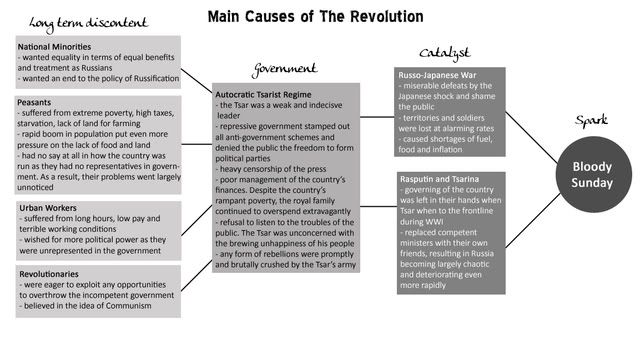 After the RevolutionPolitical Situation
After the RevolutionPolitical SituationA Communist state that strongly resembled dictatorship, as the Bolsheviks believed that it was more efficent to have one leader ruling the entire country instead of a whole cabinet. It was a proper government, and elections were held to give the people the freedom to elect the people they supported. There was no doubt more equality in the new policies that were made, and elections were held to give the people the freedom and authority to vote for the party that they believed would represent themselves well. However, after some time, the government started practising extremeism acts like destroying any opposing parties or savagely crushing any protestors or demonstrators.
Economic SituationImproved greatly, as the government began paying off its foreign debts and started to industrialize the country. Industrialization took place at an unprecedented speed and soon, Russia was beginning to bounce back from the financial difficulties that the war had landed them in. Factories were built and goods were rapidly produced and shipped off to foreign countries. Land was redistributed to give each farmer a sufficient plot of land to grow his crops in, and hence, harvest yields increased and the economy slowly began to get back on track.
Social SituationEquality was given to every citizen, regardless of ethnicity. The idea of Communism was put in place, and for a short time, the people were content with the rights and treatment that they were being given. Minorities were no longer put under Russification, and were allowed to live the way they were. The peasantry, especially, had more of a say in the government, as they were allowed to elect whichever party they supported into the government.
Ideology Communism. Communism promised equality for all, regardless of differences. It was the complete opposite of meritocracy in the way that everyone earned the same amount of money regardless of how hard they worked, what social class they came from, what religion they practised. Communism was extremely different from autocracy in the way that it gave power to the people - even the government was considered equal to the peasants, in terms of social class. Communism promised a classless society, where everyone from nobles to peasants were of the social standing, thus promising equality and equal representation in the government in the form of elections (peasants were allowed to vote) and a parliament.
Concept of a Political RevolutionA revolution can basically be broken down into 3 main stages:
Stage 1: Incubation Stage
This stage entails the brewing discontent of the people and the further deepening resentment of the country.
Before the Russian Revolution, this stage would probably be when the people were feeling neglected by their Tsar as further poverty claimed them, when they were feeling deeply resentful towards Rasputin and the wayward Tsarina.
Stage 2: Symptomatic Stage
As the unrest continues to brew, the crowds begin to take action by calling for minor demonstrations demanding attention to their interests. During this time, revolutionaries begin to emerge, often encouraging the people to voice their problems and make their opinions known.
This stage during the Russian Revolution would be the demonstration during Bloody Sunday, where the people felt compelled by Father Gapon to go to the Tsar and make known their various problems and deeply-rooted unhappiness.
Stage 3: Crisis Stage
The climax of the entire process peaks here, where the actual revolution occurs. Drastic changes occur here, often with much violence and bloodshed, resulting in the establishment of a brand new society.
This stage would be the Russian Revolution of 1917 itself, when the Tsar was forced to advocated and a new government was put in his place.
 Tsar Nicholas IITsar Nicholas II
Tsar Nicholas IITsar Nicholas II was the last Tsar of imperial Russia, and he was an extremely conservative autocratic ruler, used to the absolute power that was granted to all rulers by the Russian constituition. For centuries, Tsars were thought by the people to be demi-gods, granted the divine right to rule by God Himself. Hence, Russia remained a constituitional monarchy for centuries, and even during the political unrest of the 1900s, Tsar Nicholas refused to relinquish his absolute power.
A family man, Nicholas did not care much for state affairs and was a terrible ruler - indecisive, weak and stubborn. He came to the throne unwillingly after the unexpected death of his father, and this further cemented his reluctance to become king. Although he was a kind man and a loving father, he could be extremel cruel to his subjects as he did not tolerate opposition of any kind, often resorting to forceful and bloody measures to quash all rebels.
 RasputinGrigori Rasputin
RasputinGrigori Rasputin was a holy man (or priest) who seemed to be able to cure Alexei's (Nicholas' only son and heir) hemophilia. For years, the Romanov Royal family had been anxious to cure his disease but to little avail - no doctor could provide the boy with suitable medicine to cure the blood disorder, and for a long time, Tsarina Alexandra and Nicholas lived in constant fear that even an innocent little fall might leave their son prostrate. Rasputin was widely known for his mysterious healing powers, and though he had a terrible reputation, the Tsarina accepted him with open arms when he managed to dispel symptoms of Alexei's illness successfully each time. Rasputin then became a constant friend and advisor to the royal family, despite the rest of the country's protest. He was extremely close to the girls and the Tsarina especially, which sparked many rumours among the discontented peasants. Being in the Tsarina's constant favour allowed him a high postion and much authority in the royal court, and when the Tsar left for the warfront during the First World War, the Tsarina and Rasputin were put in charge of the court affairs. They were poor rulers and managed the country haphazardly, replacing competent ministers with their own incapable friends, causing Russia to spiral downward into deeper poverty and discontent.
Rasputin held a special power over the desperate Tsarina, and was able to gain much power over the country through favours from her. He was a deeply hated man by the Russians, which eventually resulted in his murder later during the revolution. It was rumoured that he often illicited sexual favours in exchange for holy acts, which further fuelled the people's mistrust of this fake 'holy' man. He held a certain hypnotic power over women of the court, and was hence deeply admired and elevated in the eyes of the noble ladies and his followers. It was said that he possessed dark magical powers that allowed him to hypnotize people to do his bidding, which certainly seemed so, judging by the way he puppeteered the Tsarina and the helpless Nicholas.
 Tsarina AlexandraTsarina Alexandra
Tsarina AlexandraTsarina Alexandra was a German princess and the last Tsarina of imperial Russia, wife to Nicholas II. She was deeply hated because of her foreign birth and her notorious friendship with Rasputin. The public often thought of her as cold, haughty and extremely dull, which further prompted her to attend as few court gatherings as possible. She was not on very good terms with her mother-in-law, the Dowager Empress, who, despite her foreign birth, the public adored. Alexandra failed to produce a male heir after four daughters, which was a further disappointment to the people. This was why when her first and only son, Alexei, was diagnosed with hemophilia, she turned in desperation to the holy man Rasputin.
She was also a fervent advocate of the divine right to rule that granted the Tsar absolute power, and she felt that it was unnecessary to secure the public's approval, which further deepened the hatred that the Russians felt towards her.
 Vladimir LeninLenin
Vladimir LeninLenin was a communist politican and revolutionary who led the 1917 Revolution and formed the Soviet Union. He was the man who changed Russia by forming a Communist government that gave the people free rights to vote and established a classless society, where there was no hierachy, no absolute ruler, no discrimination based on background and power. He formed the Bolshevik party, a ruthless, centralised party that preached equality for all no matter what the cost. He condemned capitalism and helped industrialize backward and poverty-stricken Russia, resulting in the rise of a new middle, working class through the establishment of the New Economic Policy. This policy helped to kickstart the stagnant Russian economy, and the prospect of the people's future began to improve.
 Leon TrotskyLeon Trotsky
Leon TrotskyLeon Trotsky was also one of the leaders of the 1917 revolution, and was one of Lenin's wingmen. He was thought by many to be the next successor of Lenin after Lenin's death, yet that position promptly went to Josef Stalin. Trotsky spent much of his remaining years battling against the policies and rise of Stalin. His theories of Marxism were closer to that of Lenin's and greatly opposed the practices of Stalinsm. As a result, he was thrown out of the Communist Party and sent into exile, and was eventually assassinated by a Soviet agent, most likely sent by Stalin.
 Josef StalinStalin
Josef StalinStalin prevailed over the power struggle with Trotsky following Lenin's death, and he was a ruthless man who replaced the successful New Economic Policy with Five-Year plans that forced too-rapid industrialization of the largely rural country and collective farming by confiscation of farm land. Rich farmers who protested against these plans were duly executed or exiled to Siberia. As Russia transformed rapidly from an agrarian economy to an industrial powerhouse, many died from the long working hours that Stalin enforced, and millions of others died from starvation and rampant poverty that remained unsolved.
He also launched the Great Purge, in an attempt to repress all political oppostion. Millions of innocent people suspected of treason or rebelling were sent to labour camps or killed.




